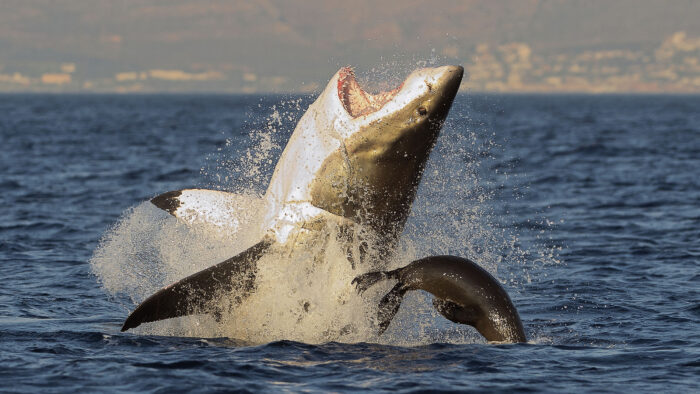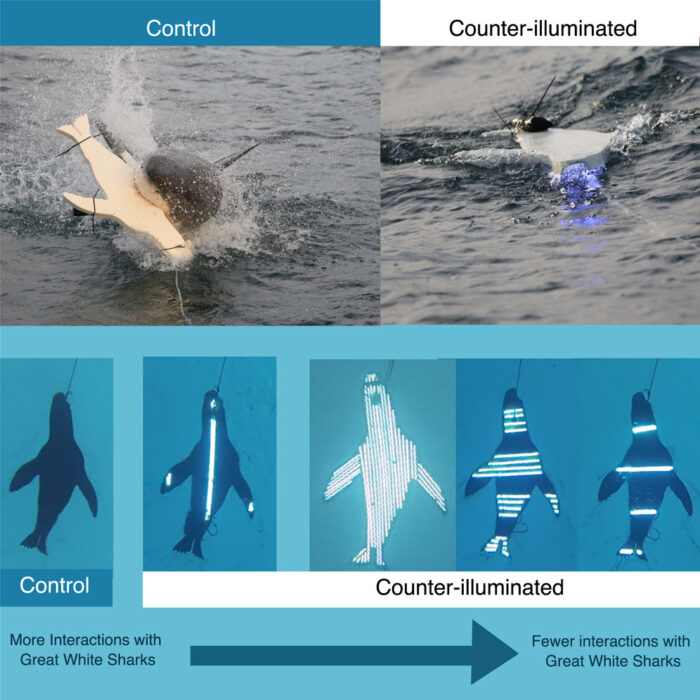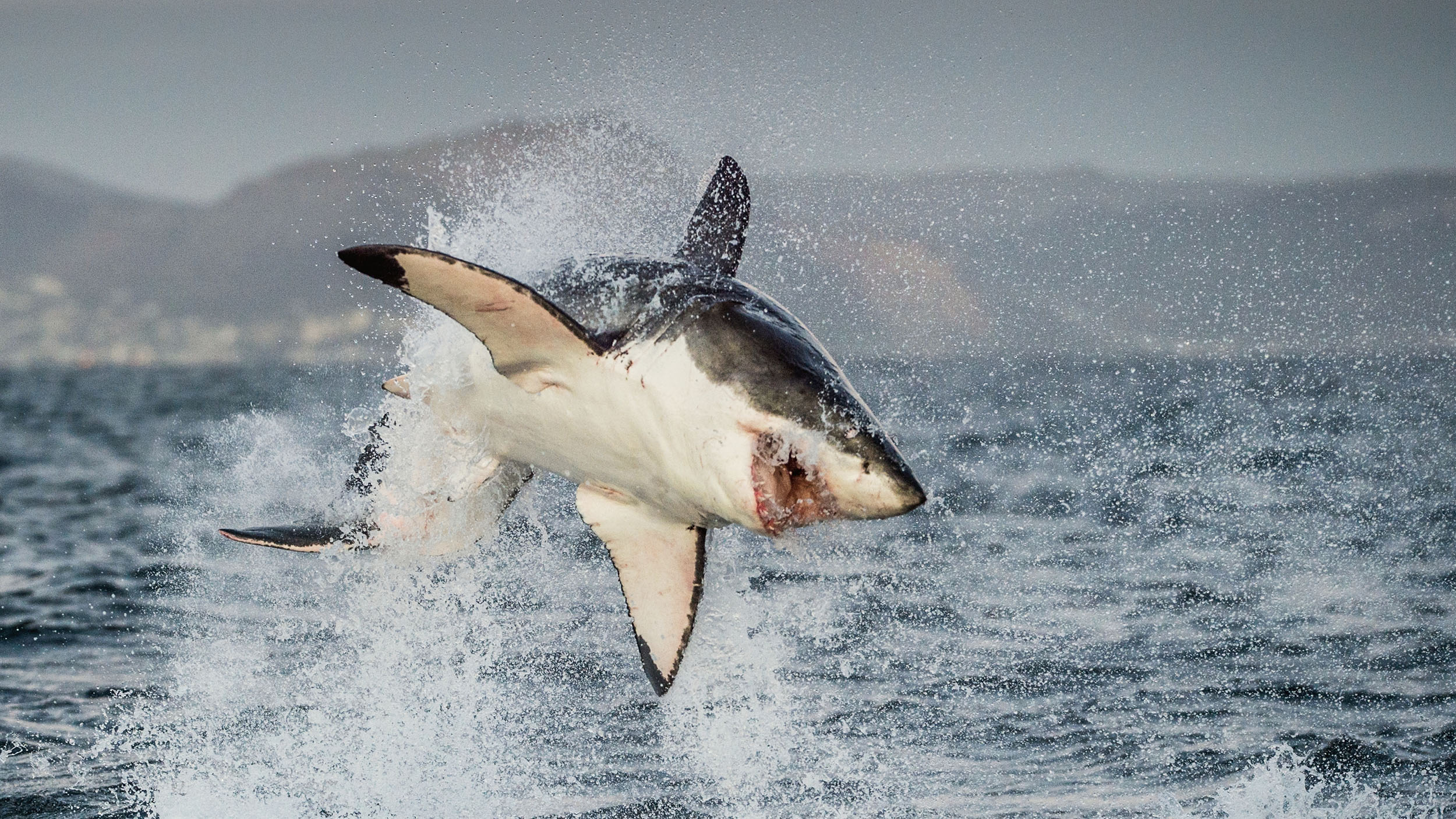There’s an old truism that’s well worth remembering if you’re scared of sharks. You’re more likely to get struck by lightning, killed by fireworks, or have a stroke than you are to perish from a great white.
But attacks do happen, and the main problem is that great white sharks probably mistake surfers and their boards for seals.
Thankfully for wave chasers, researcher Laura Ryan of Macquarie University in Sydney has made what may be a game-changing discovery. She and her team recently spent over 500 hours studying great white shark hunting behavior using decoy seals. It led to a simple, effective method for deterring accidental shark attacks on surfers.

Researchers believe that most great white shark attacks on surfers are due to mistaken identity: Sharks are after seals. Photo: Shutterstock
Lighting decoys
The experiment was fairly simple. The team rigged up a series of seal-shaped decoys with a variety of lighting arrays — vertical and horizontal strip lighting, as well as strobe lighting of varying brightness. Then they towed the decoys and observed what happened. After each tow of a lit decoy, Ryan immediately towed an unlit decoy (the control group) and compared the results.
“We have taken the approach of understanding these animals’ sensory system and how they see the world, [with] their behavior,” Ryan told New Scientist.
The results, published this week in the journal Current Biology, are intriguing. The great whites followed or attacked the unlit control dummies the most. They showed less interest in strobe-lit dummies and even less in dummies with vertical striped lights.
However, the sharks still showed some interest. Probably, Ryan said, because those configurations still allowed the sharks to make out the silhouette of potential prey.

Bright horizontal lighting proved the most effective at deterring attacks on decoy seals. Photo: Laura Ryan et al.
Brighter than the background
Horizontal lighting turned up to the brightest setting, on the other hand, was the clear winner. During the study, great whites showed zero interest in decoys lit in such a fashion. Horizontal lighting apparently broke up the silhouette enough to avoid a predation response.
“The most critical thing was that the brightness on the decoy had to be brighter than or equal to the background light,” Ryan said. “As long as the lighting stopped the silhouette from looking black, it seemed to work.”
This is great news for surfers and a good example of research that could have an almost immediate benefit.
“We are now moving from research into providing protection for swimmers and surfers,” the scientist noted.
Ryan has previously been involved in magnet-and-electrical-based shark deterrent research. But it seems likely that LEDs will find their way onto surfboards well before complex magnetic gizmos will.
She pointed out the study focused only on great whites. The method has yet to be tested on other sharks with a record of human attacks, such as tiger sharks and bull sharks.






